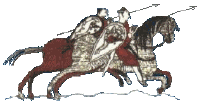
 orman
influence in Italy covered the Mezzogiorno from Sicily to the frontier with the Papal States, south of Rome. The architectural heritage of churches, abbeys,
forts and princes' residences, offers a wealth of monuments erected in the late 11th and throughout the 12th century. An abundance of documents makes it
possible to suggest a chronology of these monuments with a precision such as would be unthinkable for north-western Europe. Whether they have come down to us in
their pristine state or after various transformations, their being so remarkably akin stylistically earns these monuments a special place in the Norman world in
Europe.
orman
influence in Italy covered the Mezzogiorno from Sicily to the frontier with the Papal States, south of Rome. The architectural heritage of churches, abbeys,
forts and princes' residences, offers a wealth of monuments erected in the late 11th and throughout the 12th century. An abundance of documents makes it
possible to suggest a chronology of these monuments with a precision such as would be unthinkable for north-western Europe. Whether they have come down to us in
their pristine state or after various transformations, their being so remarkably akin stylistically earns these monuments a special place in the Norman world in
Europe.
While all of southern Italy is representative of this heritage, one's attention is drawn in particular to two otherwise widely differing
regions, Molise and Sicily.
Sicily was the heart of the Norman Empire, the centre from which the Norman kings exercised their power, and also the place where the process
leading to a syncretism of Byzantine, Arab and Norman influences materialized – as the great writer Benedetto Croce puts it, the "first work-of-art State".
Molise is less familiar to the general public but its frontier location gives it a special identity and a singular historical role. Dotted
with numerous castles and other defensive works which are particularly well preserved, it is a province with long unsuspected possibilities for study and
research. The Norman influence on the religious architecture in Molise is counterbalanced by the abiding attraction for the prestigious monastery at
Montecassino.
Thus the monuments of Sicily and Molise need to be compared with those of Campania, Apulia and Calabria the better to gauge the originality
of each of the provinces of the Norman kingdom.


The Molise
 Il comune informa
Il comune informa 



